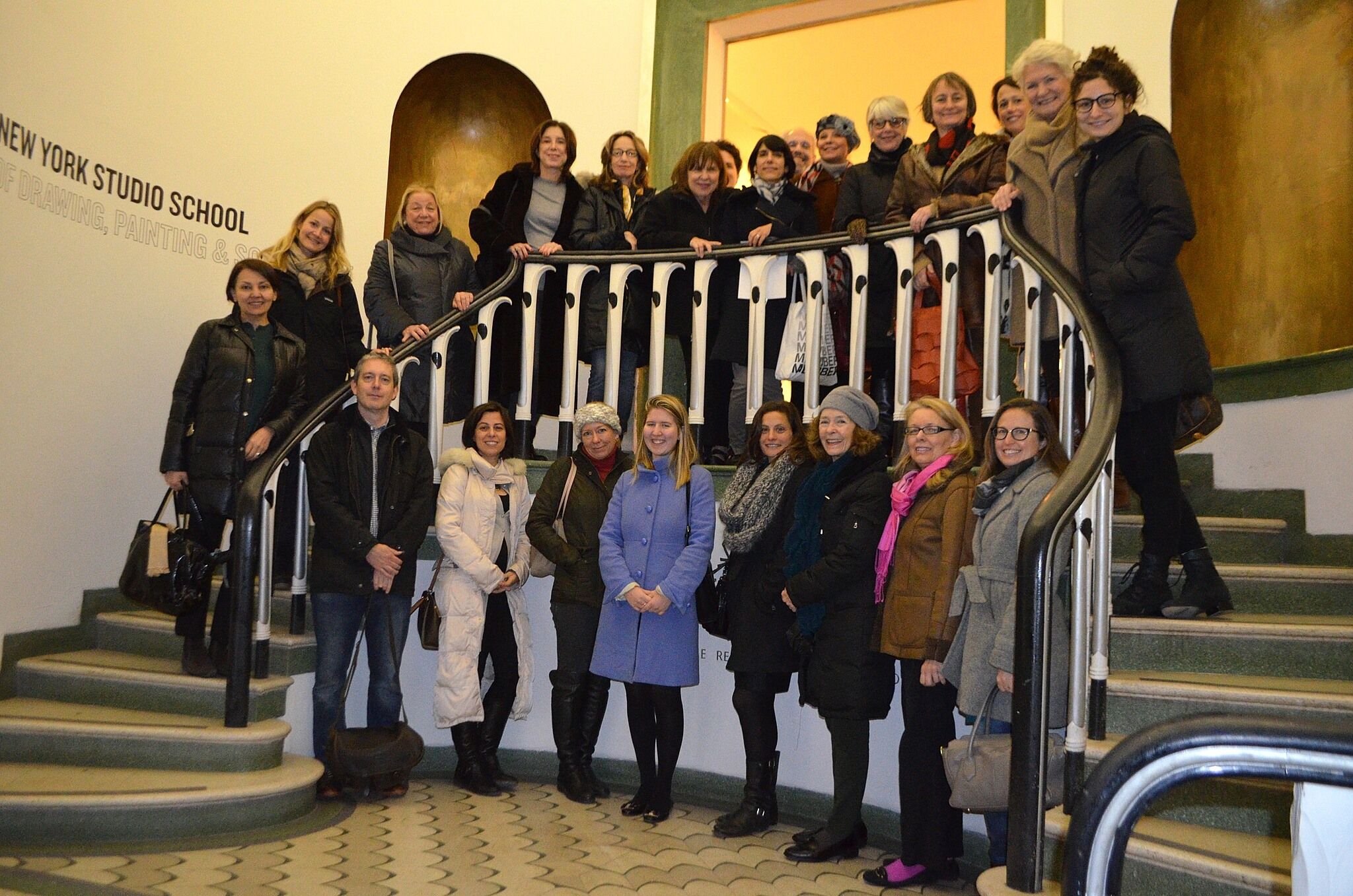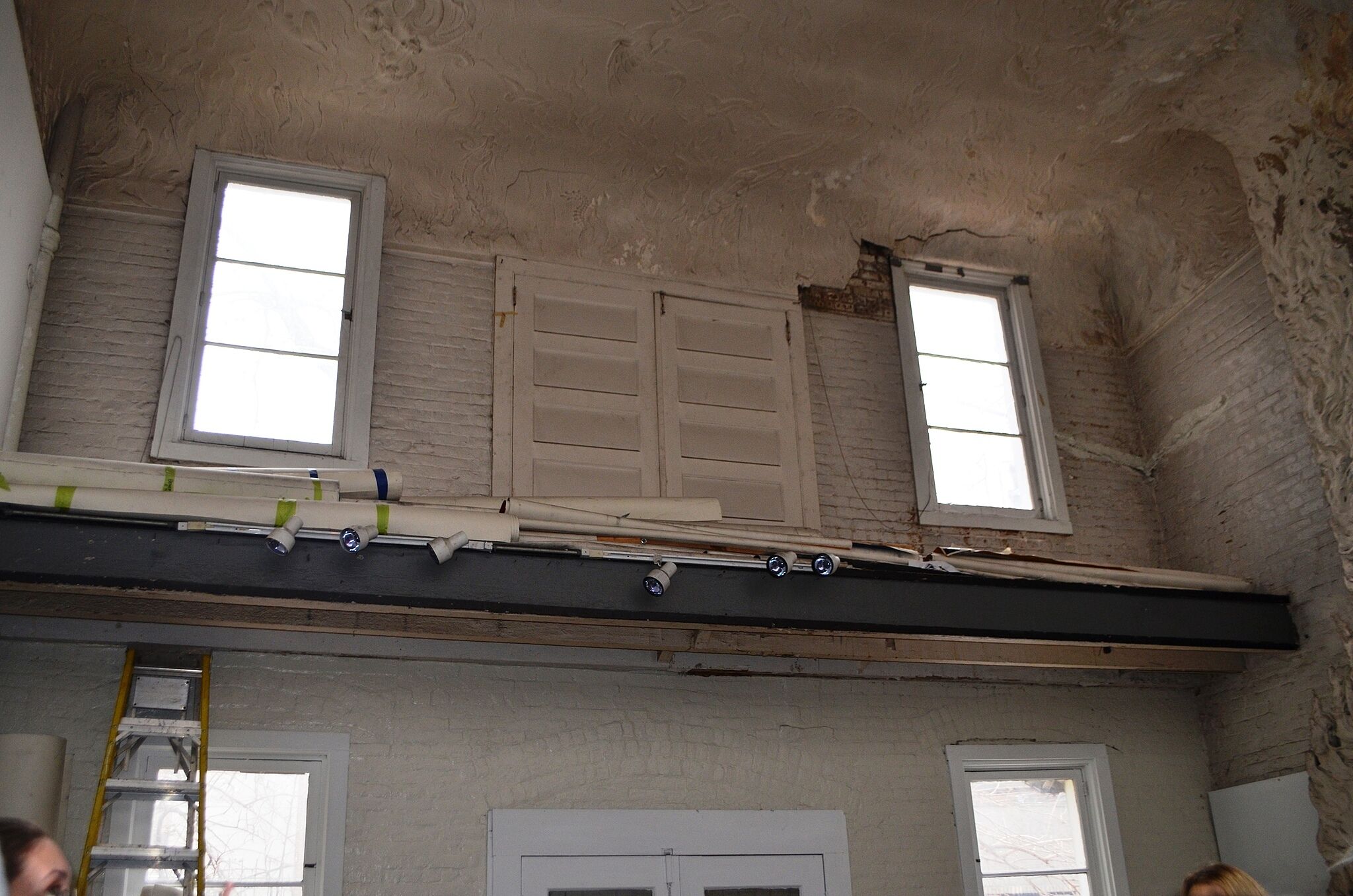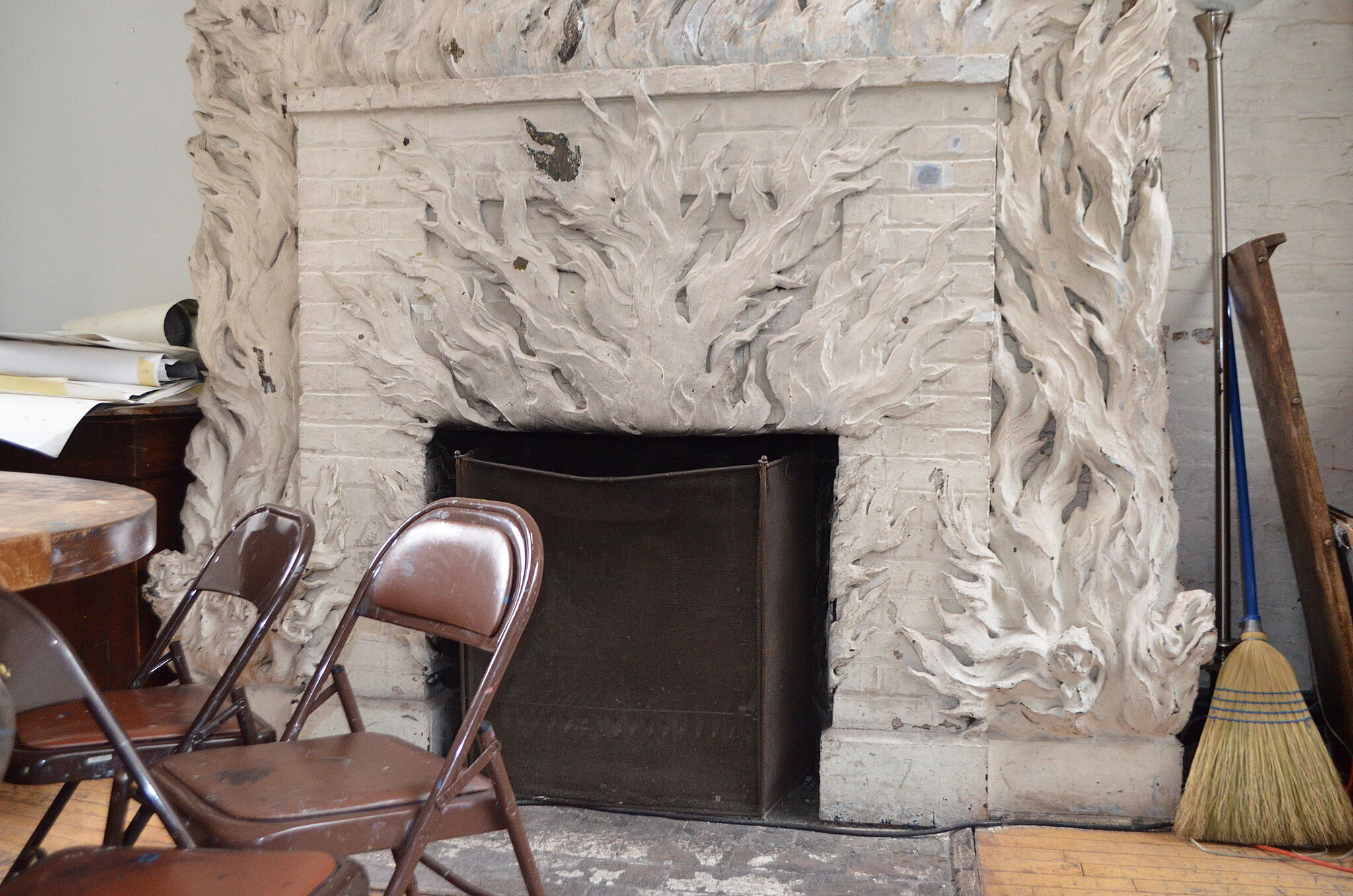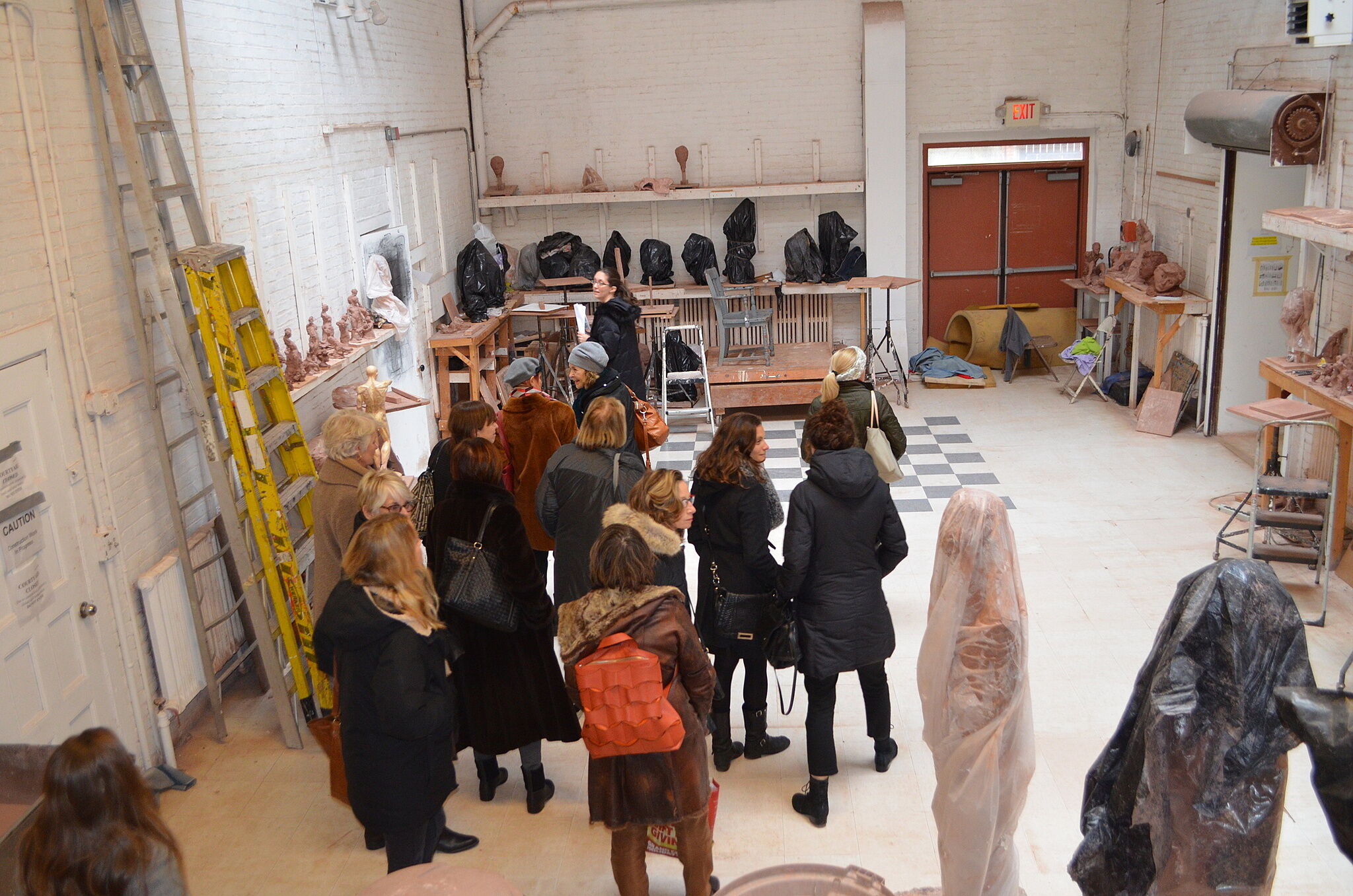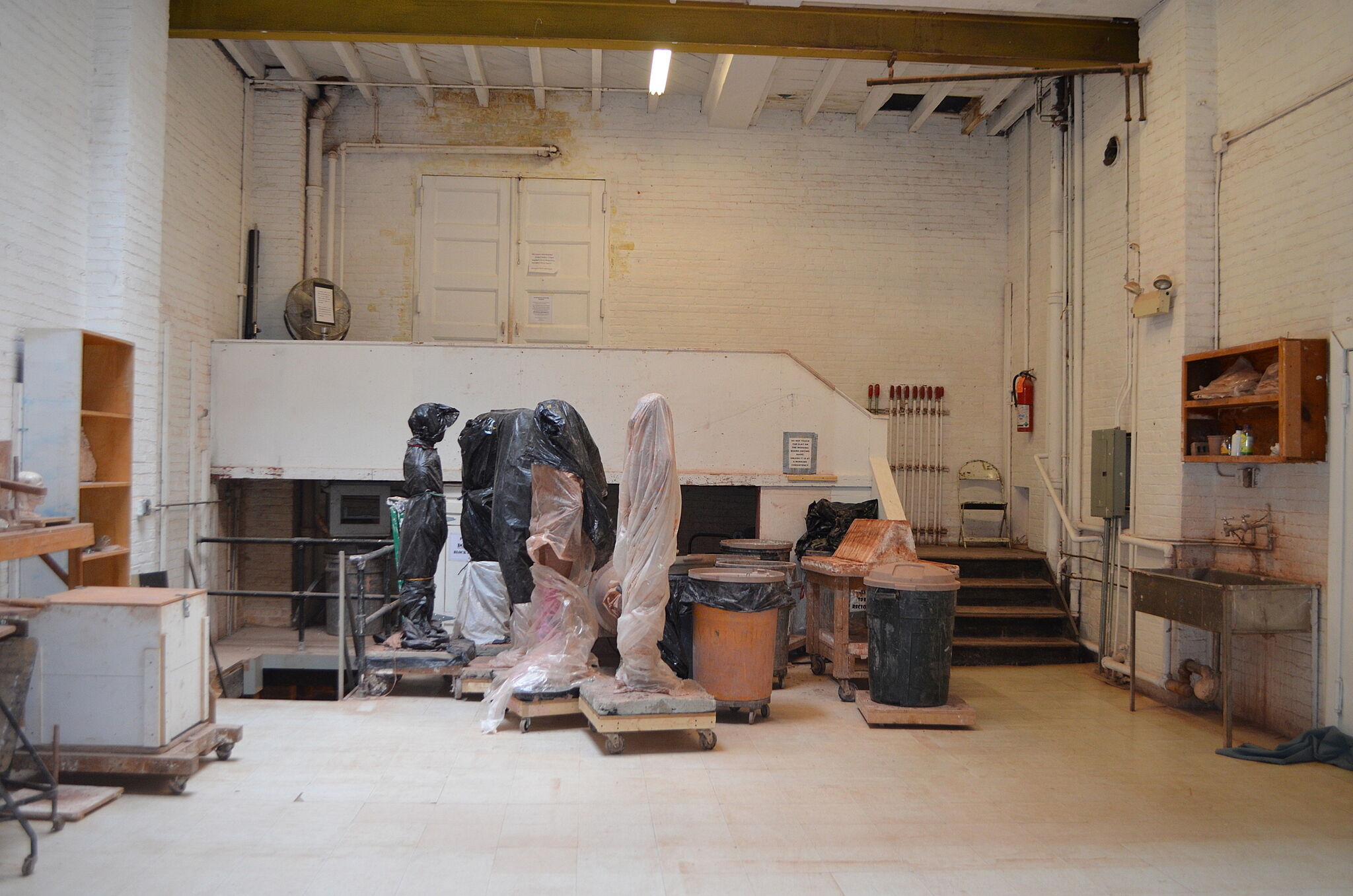Whitney studio visit
Jan 5, 2015
On December 8, the Whitney Docents went on a special field trip to the New York Studio School (NYSS) on West Eighth Street in Manhattan’s Greenwich Village where they were given a guided tour of the premises. The building was the first home of the Whitney Museum of American Art from 1931 to 1954.
Beginning in 1907, sculptor and Museum founder Gertrude Vanderbilt Whitney occupied a space which was part of the current West Eighth Street building and is now known as the Whitney Studio. Mrs. Whitney converted a former hayloft and stable at 19 MacDougal Alley into a sculpture studio. She added a fireplace and a skylight and removed the hayloft to create a space where she could work uninterrupted and at a distance from society life, building her reputation as a serious sculptor. Indeed, MacDougal Alley has a long history of artists who had studios there, including William Frazier, Isamu Noguchi, and Jackson Pollock.
In 1918 Mrs. Whitney remodeled the studio, commissioning the artist Robert Winthrop Chanler to create a painted plaster bas-relief that spreads upward from the fireplace across the ceiling. Although the polychrome red, gold, and other vivid colors have long since disappeared and the stained glass windows have been removed, the molded flames, nymphs, deities, and mythical creatures still adorn the space. Chanler’s project took five years to complete, and subsequently Mrs. Whitney started to use the elaborately decorated room as a salon instead of a sculpture studio. In 1923 she purchased Daniel Chester French’s studio space next door where he had made the maquette for the Lincoln Memorial in Washington, DC.
By 1930 Mrs. Whitney became the owner of the four townhouses and four stables that comprise the current NYSS building on West Eighth Street. Together with the Museum’s first director, Juliana Force, Mrs. Whitney established the Whitney Studio galleries and the Whitney Studio Club. In 1929, the buildings were remodeled to create additional public exhibition space for the Whitney Museum which opened to the public in 1931. A secret staircase was also constructed so that Mrs. Whitney could access Force’s office and apartment without venturing outside.
The buildings were designated a Historic Landmark by the National Park Service in 1992 and were selected for the 2012 World Monuments Watch which has sponsored graduate students to undertake studies of the building for conservation purposes. NYSS continues the building’s artistic tradition by offering students affordable tuition and frequent opportunities for life drawing from models. The Whitney Studio is now used as a classroom for sculpture students and one of Mrs. Whitney’s sculptures is displayed in the courtyard between the buildings, creating a further connection between past and present.
The Whitney Docents were enthralled by their visit to the birthplace of the Whitney Museum. Docent Nancy Roberts wrote: “It is the history of the place—so physical and real in this building—that charged our visit with excitement.” And Docent Sue Karp commented: “Walking through the entrance of 8 West Eighth Street, it was like coming home to a very familiar place. After seeing so many photos and living with so much of the art at the Museum, I felt a kind of warmth. . .What impressed me most was the aura of Gertrude Vanderbilt Whitney, a presence that permeated the rooms. What a treat to be there in the space that was the beginning of the amazing institution within which we are all so immersed.”
For more information about the Whitney’s early history, visit the Whitney’s Library Projects.
By Dina Helal, Manager of Education Resources

